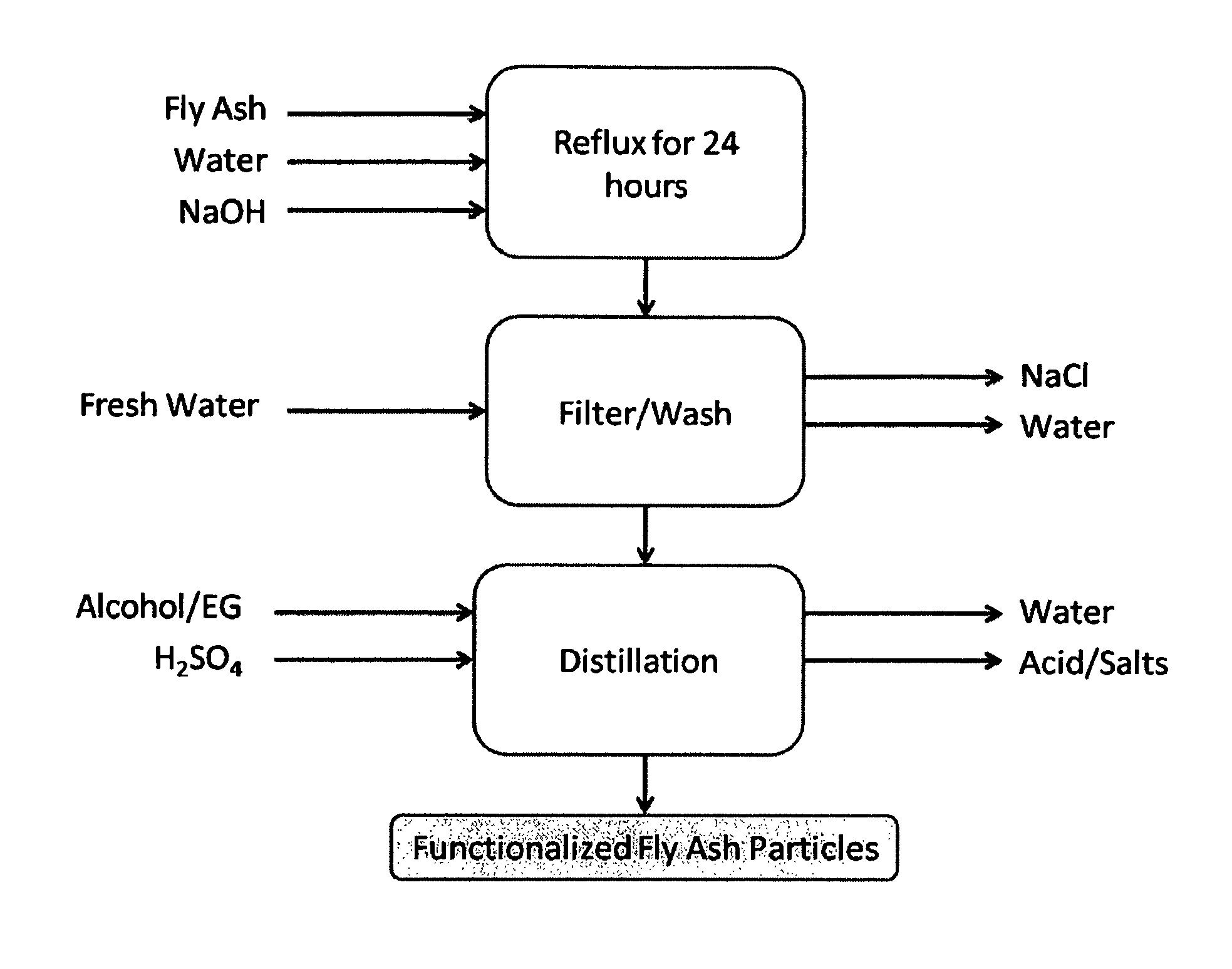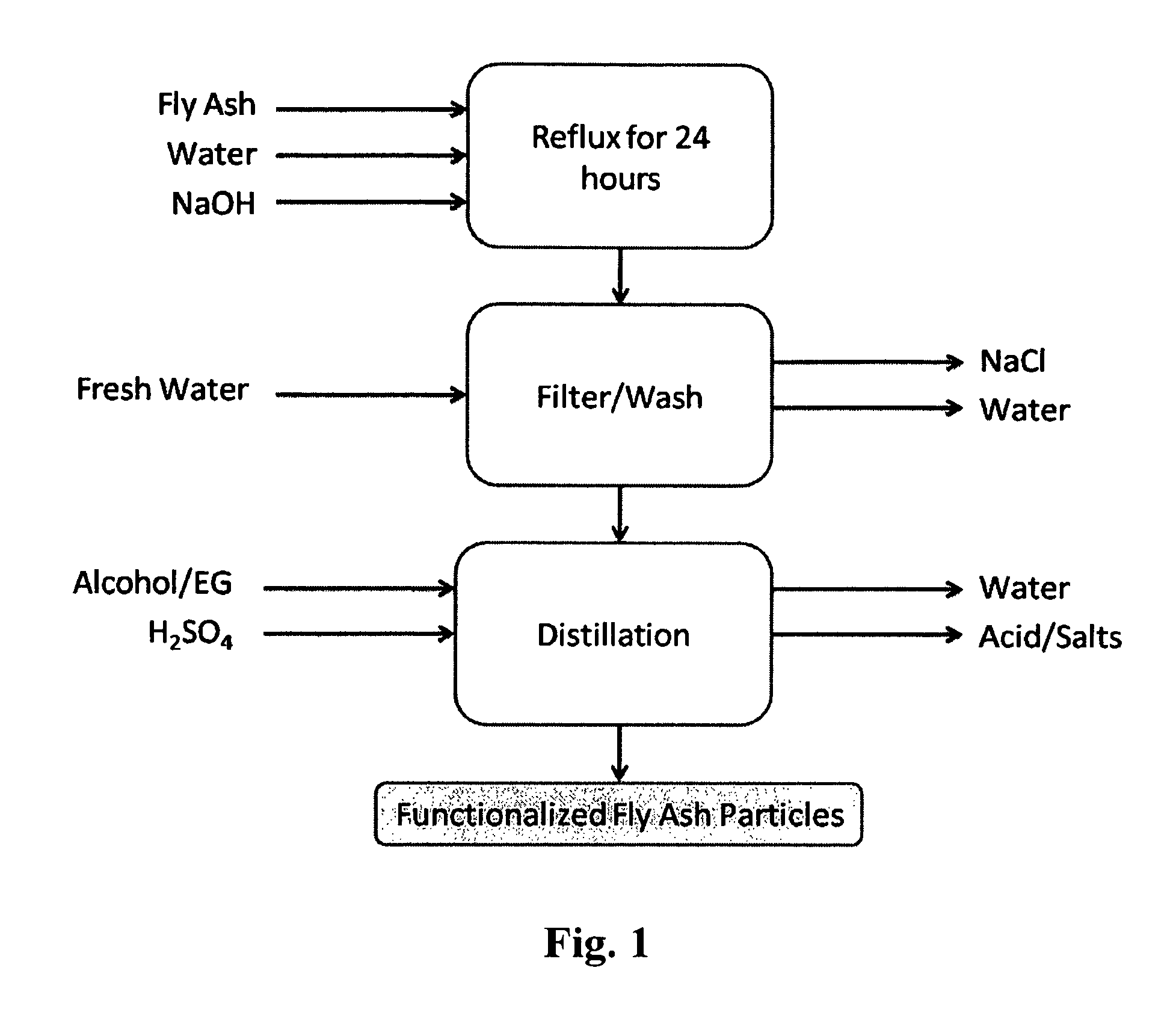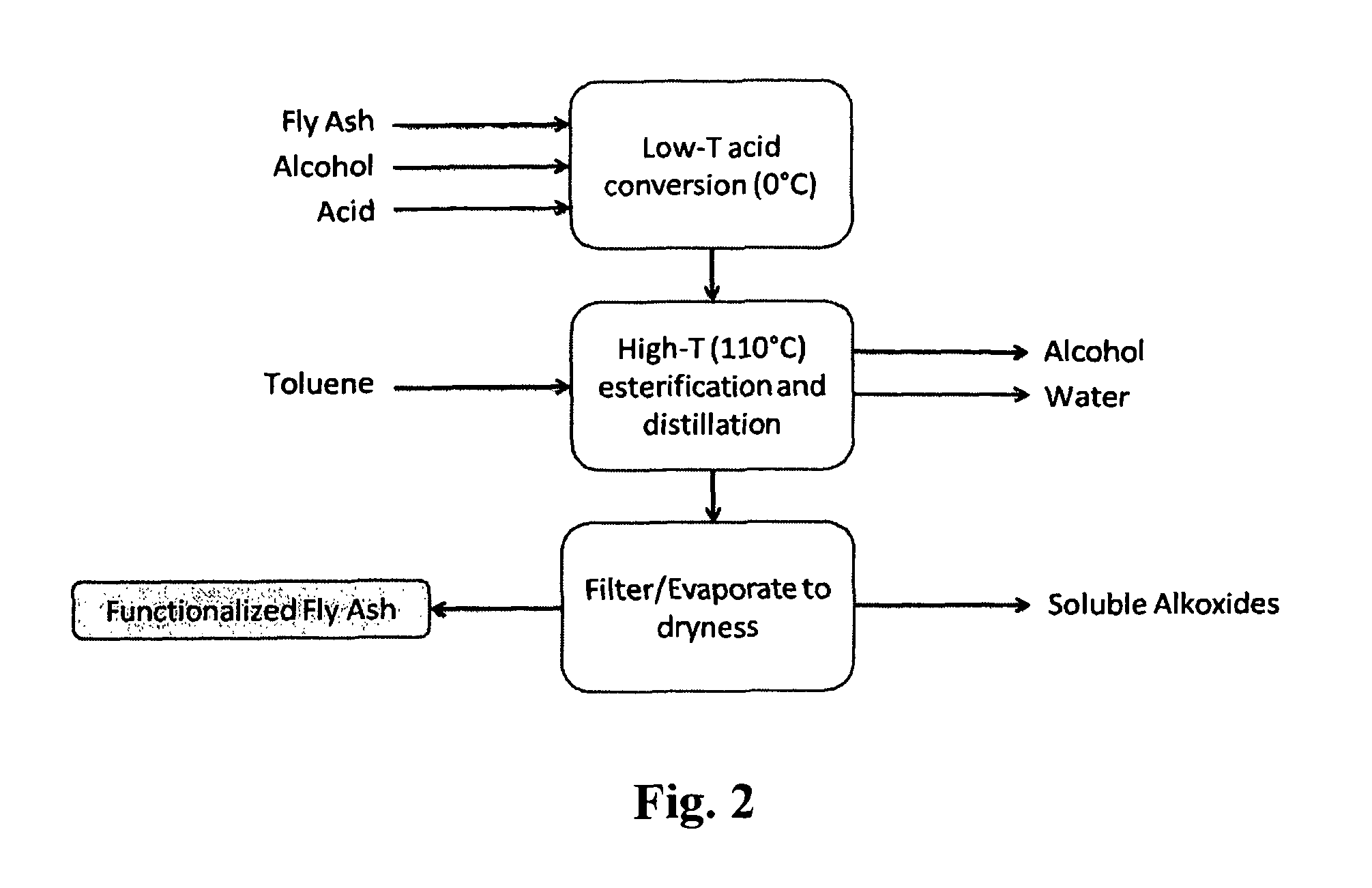Structural materials with nearly zero carbon emissions
a technology of carbon emissions and structural materials, applied in the field of structural materials with nearly zero carbon emissions, can solve the problems of low reduction of carbon dioxide emissions from cement plants, fly ash significantly reducing the compressive strength of concrete, and the percentage of fly ash that can be used in concrete mix with portland cemen
- Summary
- Abstract
- Description
- Claims
- Application Information
AI Technical Summary
Benefits of technology
Problems solved by technology
Method used
Image
Examples
first embodiment
n Process No. 1
[0072]The method of the present invention contemplates starting with an alumino-silicate based raw material in powder form, such as industrial power plant fly ash or mining tailings. In step one, the raw materials are mixed with an alkaline aqueous solution and refluxed at 120° C. while stirring continuously, as shown in FIG. 1. The surfaces of the alumino-silicate based powders are converted during this Process Step 1 reaction to chemically activated surfaces. After the Process Step 1 reaction, in Process Step 2 the activated powders are filtered and washed with fresh water to remove residual alkali, in the form of sodium chloride (NaCl). The soluble alkali washed from the powder is recycled for use in subsequent batches to eliminate any negative environmental impact of the process.
[0073]After step 2, powders, with chemically activated particle surfaces, are dried in an ambient atmosphere at low temperatures of approximately 50° C. with moisture monitoring to assure ...
second embodiment
Process No. 2
[0078]This embodiment of the present invention is shown in FIG. 2 and contemplates starting with Process Step 1 with an alumino-silicate based raw material in powder form, such as industrial power plant fly ash or mining tailings. The raw materials are mixed with an alcohol / acid solution at low temperatures of near 0° C. The chemical reactions in Process Step 1 result in surface activation of the alumino-silicate powders. After the surface activated powders are functionalized in Process Step 2 by reacting them with toluene or other appropriate chain organics at moderate temperatures of greater than 100° C. subjecting the functionalized powders to esterification and distillation; the alcohol and water are removed from the system. In Process Step 3 the functionalized alumino-silicate powders are filtered and residual liquids are evaporated to produce dried functionalized powders.
[0079]Soluble alkoxides are removed from the system during evaporation and are a valuable by-p...
third embodiment
on
[0083]The present embodiment follows a modified geo-polymerization route demonstrated by Davidotis et al in U.S. Pat. No. 5,342,595 (1994) supra and Jaarsveld et al in Chemical Engineering Journal (2002) supra. However, the present process is significantly varied to accommodate fast mineralization of the Fly Ash in a one step process in which the fly ash is mixed with various precursors and with high concentration alkali that forms the amorphous zeolites which are hard and strong. This process is in contrast to the prior art that uses three or more process steps.
PUM
| Property | Measurement | Unit |
|---|---|---|
| temperature | aaaaa | aaaaa |
| time period | aaaaa | aaaaa |
| diameter size | aaaaa | aaaaa |
Abstract
Description
Claims
Application Information
 Login to view more
Login to view more - R&D Engineer
- R&D Manager
- IP Professional
- Industry Leading Data Capabilities
- Powerful AI technology
- Patent DNA Extraction
Browse by: Latest US Patents, China's latest patents, Technical Efficacy Thesaurus, Application Domain, Technology Topic.
© 2024 PatSnap. All rights reserved.Legal|Privacy policy|Modern Slavery Act Transparency Statement|Sitemap



